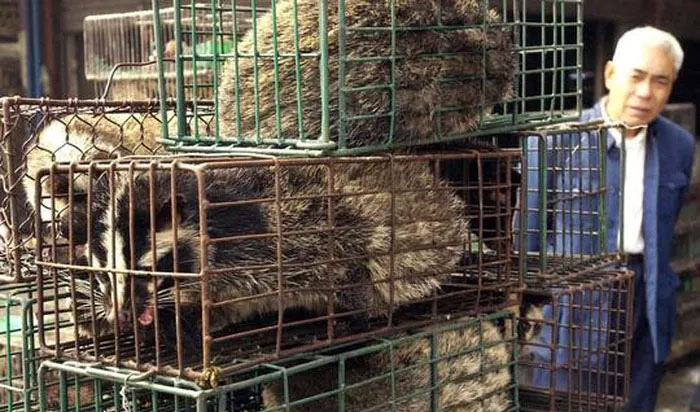China recently conducted a comprehensive survey of viral pathogens in wildlife, discovering 18 that harbor a range of diseases threatening humans and other animals.
The National Key Research and Development Program of China has supported scientists from various organizations in searching for potential pandemic threats in the future.
This is China’s first comprehensive study to assess which wildlife species are most likely to carry viruses that could trigger a pandemic outbreak.
In studying wildlife species sold in Chinese markets, scientists identified 71 types of viruses in mammals. Among these, 18 are considered “high-risk” for humans and pets.
Masked Palm Civet, a cat-like carnivore associated with the spread of severe acute respiratory virus in markets in southern China nearly 20 years ago, carries some of the most concerning pathogens, according to a study published on November 12.

Masked Palm Civet sold in a wildlife market in Guangzhou Province – (Photo: AP).
Authors from China, the United States, Belgium, and Australia did not find anything resembling SARS-CoV-2, the virus responsible for the COVID-19 pandemic. However, they pointed out that strains carried by bats infecting other animals pose a risk of spreading dangerous diseases.
Co-author Edward Holmes, an evolutionary biologist at the University of Sydney, Australia, stated in an email: “This study also indicates that humans frequently transmit their viruses to other animals. Clearly, there is a two-way flow of viruses.”
The wildlife trade market in China was estimated to be worth $82 billion in 2016.
China banned wildlife trade after the COVID-19 outbreak. Following this move, in early 2020, China acknowledged poor sanitary conditions and close proximity between animals and humans. At the same time, the diversity of species in live animal markets and the restaurants they supply creates an ideal breeding ground for emerging infectious diseases.
Many of the wildlife species investigated were displayed at the Huanan Seafood Wholesale Market in Wuhan, the epicenter of the initial COVID-19 outbreak. Among the notable virus findings, scientists first identified the presence of hepatitis E virus and H9N2 influenza strain in Masked Palm Civets.
Biologist Holmes, who received the Prime Minister’s Science Prize in Australia, remarked: “Animals sold in live animal markets carry many viral pathogens. The timing and favorable environment can make these viruses easily capable of causing a global pandemic.”
- What happens when a fly lands on your cake? Trust me, you’ll want to throw it away!
- The shocking fungus that creates “love potions,” stimulating male flies to mate with female flies that have “bitten the dust”
- It turns out this is the identity of the culprit creating the strange tiny bags on our walls


















































